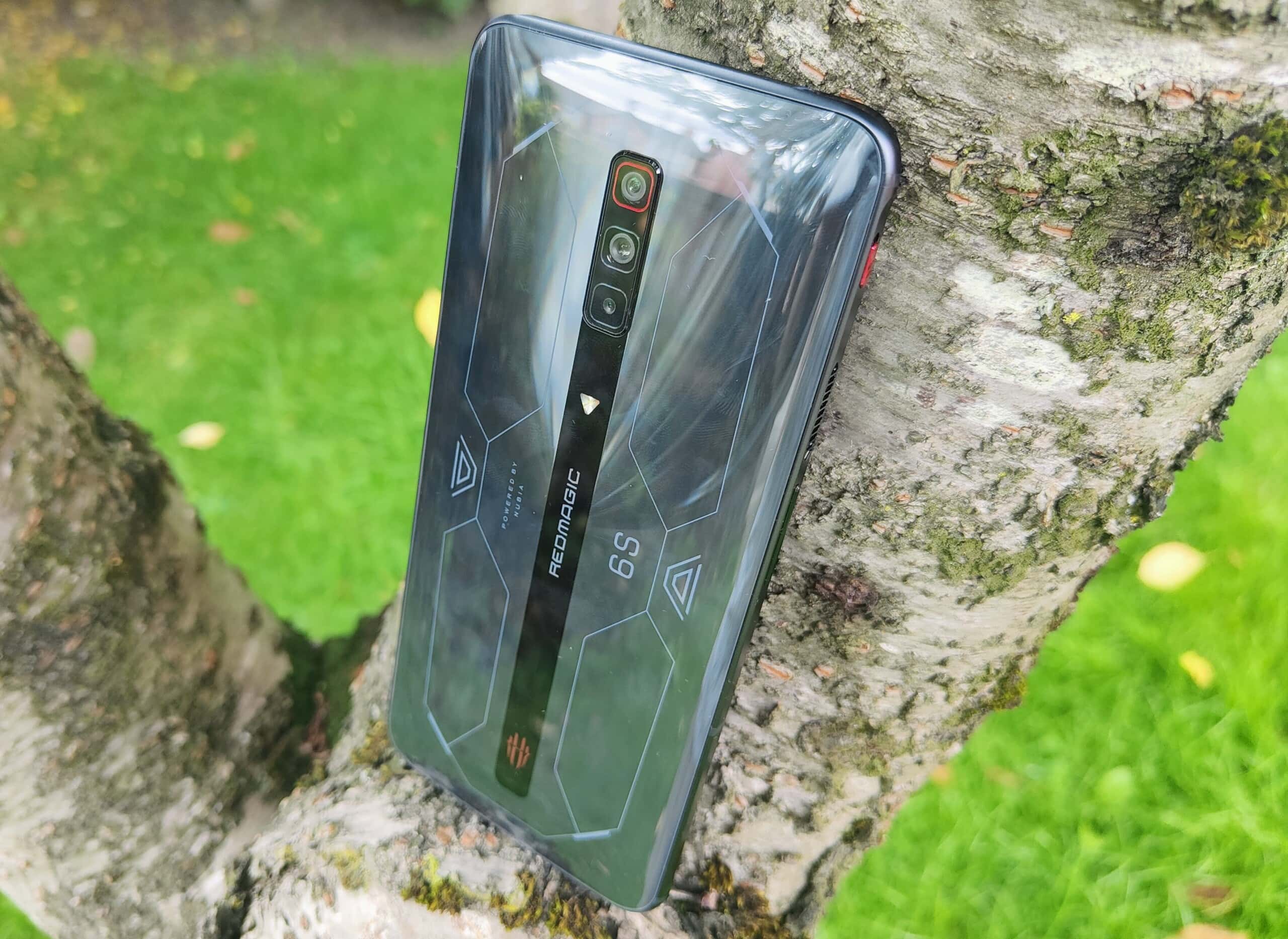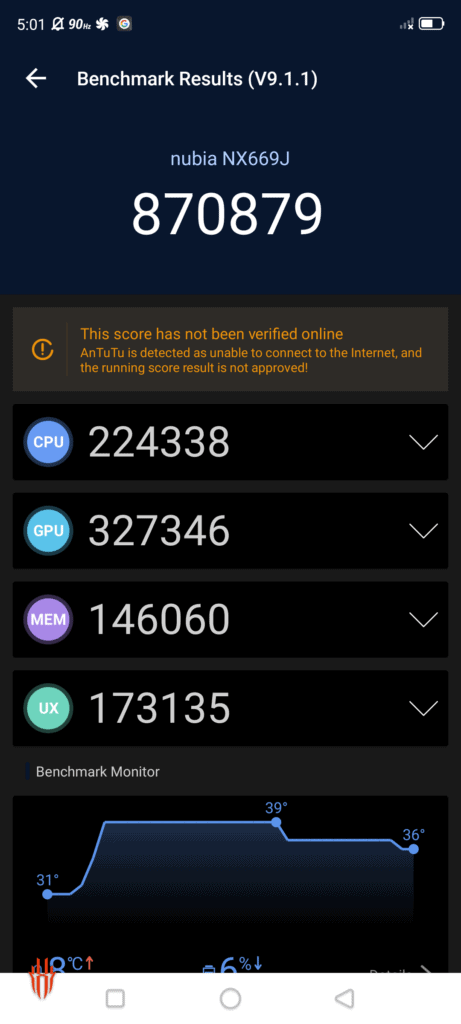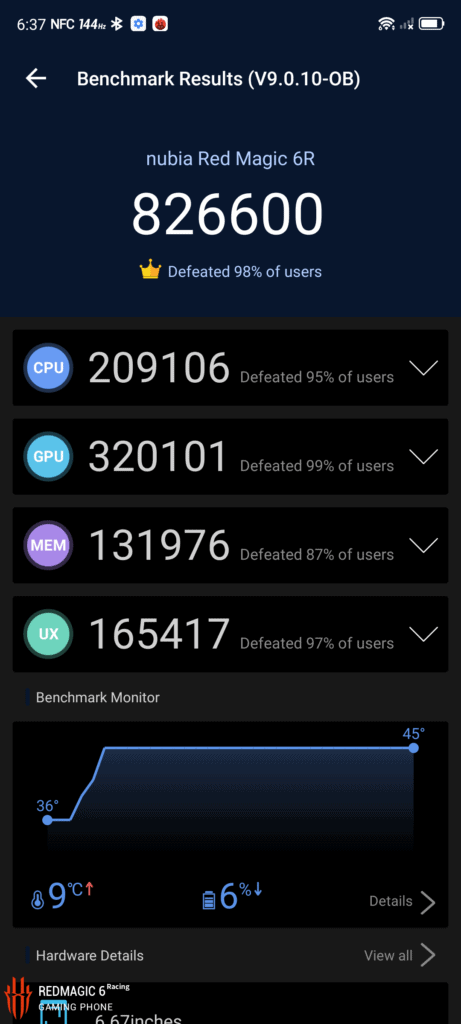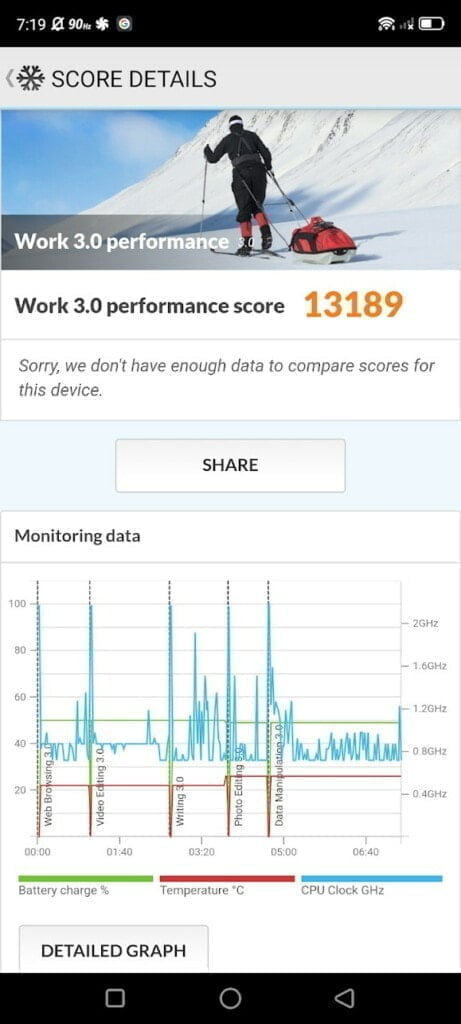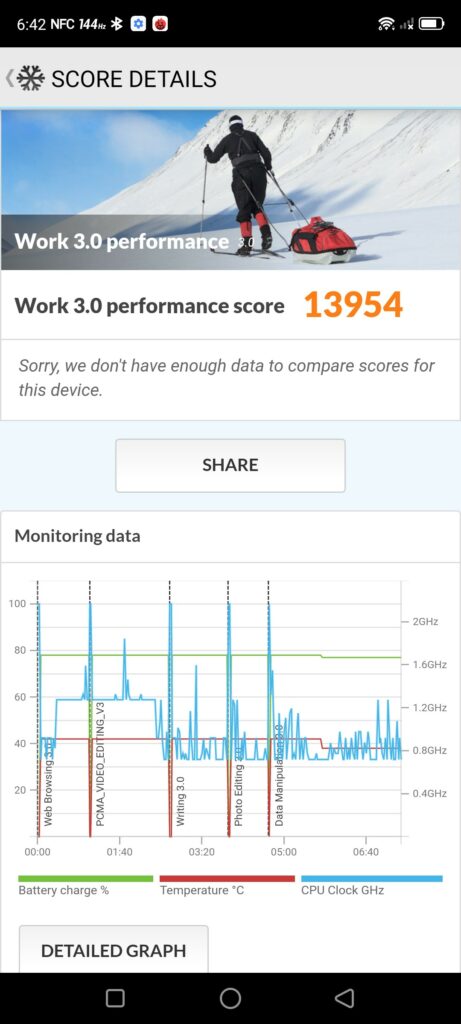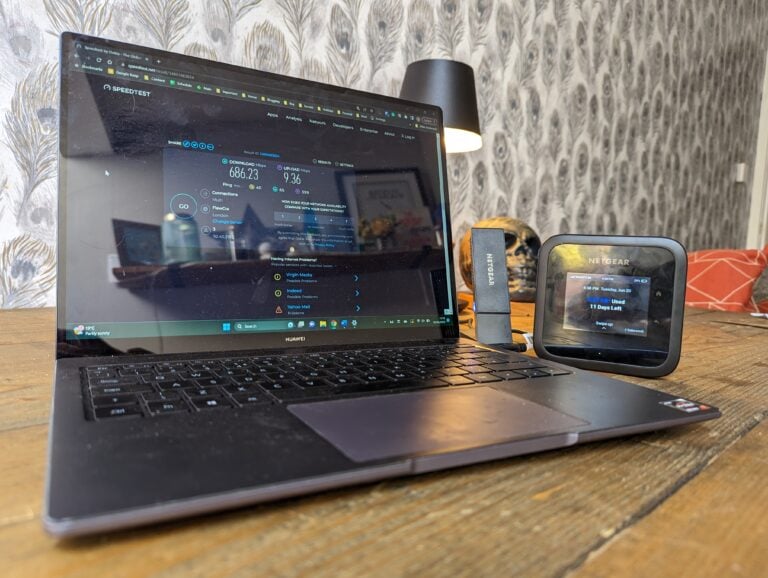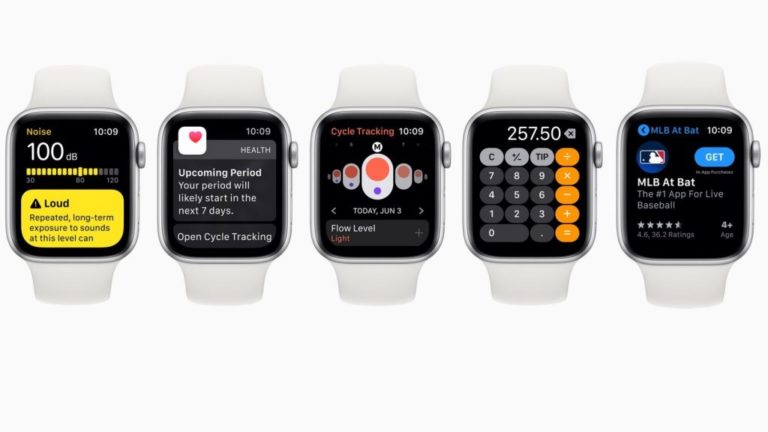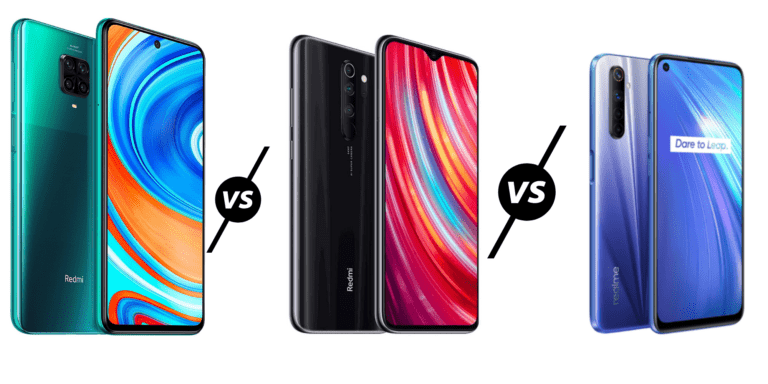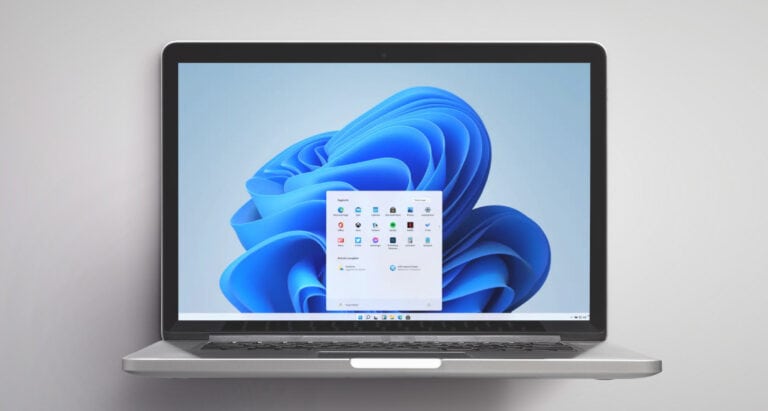Any links to online stores should be assumed to be affiliates. The company or PR agency provides all or most review samples. They have no control over my content, and I provide my honest opinion.
The Red Magic 6S Pro was announced earlier this week and is the second phone to be announced with the Qualcomm Snapdragon 888+, it will also likely be available to buy before the Asus.
With a launch price of £519, you are only paying a tenner more than the existing Red Magic 6 Pro.
Qualcomm Snapdragon 888+ vs Snapdragon 888 Specification
| Snapdragon 888 | Snapdragon 888 Plus | |
| CPU Cores | 1 x 2.84GHz Cortex X1 | 1 x 2.995GHz Cortex X1 |
| 3 x 2.42GHz Cortex A78 | 3 x 2.42GHz Cortex A78 | |
| 4 x 1.80GHz Cortex A55 | 4 x 1.80GHz Cortex A55 | |
| GPU | Adreno 660 | Adreno 660 |
| AI Engine | Hexagon 780 | Hexagon 780 |
| 26 TOPS | 32 TOPS | |
| 5G Modem | Snapdragon X60 (Integrated) | Snapdragon X60 (Integrated) |
| Connectivity | FastConnect 6900 | FastConnect 6900 |
| Wi-Fi 6E | Wi-Fi 6E | |
| Bluetooth 5.2 | Bluetooth 5.2 | |
| Display | QHD+ at 144Hz | QHD+ at 144Hz |
| Memory | LPDDR5 up to 3200MHz | LPDDR5 up to 3200MHz |
| ISP | 14-bit Spectra 580 | 14-bit Spectra 580 |
| Node | 5nm | 5nm |
The specification isn’t really that different from the existing Snapdragon 888. You have a 5.5% increase on the Cortex X1 frequencies, and that’s about it.
Qualcomm state the SD888+ has 20% more performance for AI tasks than the SD888, but it uses the same Hexagon 780 AI engine. How much difference this will make
Benchmarks
Antutu v9
- Red Magic 6s Pro with Snapdragon 888+ : 870879
- Red Magic 6R with Snapdragon 888 : 826600
Antutu is the benchmark that shows the biggest difference, albeit still quite small. The benchmark score increased 5.3%
Geekbench
- Red Magic 6s Pro with Snapdragon 888+ : 1190 / 3698
- Red Magic 6R with Snapdragon 888 : 1189/3333
Geekbench is an odd result, the single-core result is identical, but the multi-core has gone up by 10.95%. Based on the specification, I’d have expected a small increase on the single-core, and that increase to be reflected with a smaller percentage gain for the multi-core.
3DMark Wild Life & Stress Test
- Red Magic 6S Pro with Snapdragon 888+ : : 5856 high, 5806 low, 99.1% stability
- Red Magic 6R with Snapdragon 888 : 5872 high, 5557 low, 94.6% stability
The Qualcomm Snapdragon 888 is extraordinarily powerful, but with most phones, it suffers from thermal throttling quite badly when you run stress mark bench tests such as 3DMark Wild Life. The Red Magic 6R was the first SD888 phone I have used this year that doesn’t have this issue.
By the looks of things, Red Magic achieved this by allowing the chipset to run hotter for longer, with a peak temperature of 59-degrees, whereas other phones such as the OnePlus 9 Pro peaked at 41-degrees. A side effect to this was that the OnePlus would drop about 10% in the battery while the Red Magic 6R would eat up around 18% battery as it kept the phone going full throttle for the entire test.
The Red Magic 6S Pro has a built-in fan that runs while gaming or benchmarking, so the overall stability is improved further, with 99.1% and a peak temperature of 51-degrees. However, the actual benchmark results are effectively the same, my result shows the 6s Pro scoring less than the 6R, but this is such a small difference I’d just class it as the same.
PCMark
- Red Magic 6s Pro with Snapdragon 888+ :13189
- Red Magic 6R with Snapdragon 888 : 13954
PCMark is another benchmark that I find doesn’t give the most accurate representation of chipset performance. This is because it is dependant on how the device chooses to clock the chipset. In this case, the SD888+ score is lower, but looking at the monitoring data for the two phones, it looks like the Red Magic 6R keeps the CPU clock frequencies stuck at around 1.2GHz for a large portion 6S Pro keeps the frequencies low for most of the test.
Androbench Storage Benchmark
- Red Magic 6s Pro with Snapdragon 888+ :1553 MB/s Read, 1024 MB/s write, 223 MB/s random read, 250MB/s random write
- Red Magic 6R with Snapdragon 888 : 1450 MB/s Read, 659 MB/s write, 132 MB/s random read, 336MB/s random write
Storage benchmarks shouldn’t be influenced by the chipset too much, but there are differences between the two phones that are worth highlighting. The new Red Magic 6s Pro has improved the storage speeds a moderate amount, for both sequential read and writing but also random reads.
AI Benchmarks
- Red Magic 6s Pro with Snapdragon 888+ : 870879
- Red Magic 6R with Snapdragon 888 : 826600
There is one AI benchmarking app on the Play Store. However, much like PCMark, the score you get can vary wildly based on device or if a particularly chipset performs well for a specific element of the benchmark.
Looking at the official results, the Red Magic 6 Pro scores 133.9K, but the Red Magic 6R I used scores 200K and the Red Magic 6s Pro. So I would take these results with a pinch of salt.
Overall
The Qualcomm Snapdragon 888 Plus doesn’t really offer much of an upgrade in terms of specifications, and this is reflected with the benchmarks.
The phone I was supplied was running an early version of the RedMagic OS, so it is quite likely that some of the benchmarks and overall day to day performance will improve slightly with more mature software.
The claimed 20% AI improvement is harder to test, and it is difficult to quantify how much of an impact this will have on real life usage.
As far as the Red Magic 6s Pro goes, the price difference between it and the Red Magic 6 Pro is so small you may as well opt for the new model, even if the performance gains are minimal.
I am James, a UK-based tech enthusiast and the Editor and Owner of Mighty Gadget, which I’ve proudly run since 2007. Passionate about all things technology, my expertise spans from computers and networking to mobile, wearables, and smart home devices.
As a fitness fanatic who loves running and cycling, I also have a keen interest in fitness-related technology, and I take every opportunity to cover this niche on my blog. My diverse interests allow me to bring a unique perspective to tech blogging, merging lifestyle, fitness, and the latest tech trends.
In my academic pursuits, I earned a BSc in Information Systems Design from UCLAN, before advancing my learning with a Master’s Degree in Computing. This advanced study also included Cisco CCNA accreditation, further demonstrating my commitment to understanding and staying ahead of the technology curve.
I’m proud to share that Vuelio has consistently ranked Mighty Gadget as one of the top technology blogs in the UK. With my dedication to technology and drive to share my insights, I aim to continue providing my readers with engaging and informative content.

